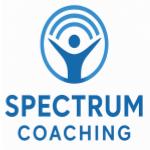Fitness built for neurodivergent minds—custom workouts, focus tools, and accountability that last.
 Managing ADHD Symptoms with Yoga
Managing ADHD Symptoms with Yoga
Attention Deficit Hyperactivity Disorder (ADHD) can feel overwhelming. Yoga, a powerful mindfulness tool, offers a natural way to manage ADHD symptoms. This blog explores how yoga improves focus, emotional regulation, and overall well-being for those with ADHD.
Introduction: Managing ADHD Symptoms with Yoga
ADHD presents challenges like difficulty focusing, impulsivity, and hyperactivity. Yoga, combining physical movement and mindfulness, is a holistic approach that benefits both body and mind. With consistent practice, yoga can help manage ADHD symptoms, improve mental clarity, and promote emotional balance. Here’s how yoga can support individuals with ADHD.
Improving Focus with Yoga
ADHD often disrupts attention, making it hard to concentrate. Yoga enhances focus through breath control, mindfulness, and physical postures.
Breathwork for Mental Clarity Breathing exercises, or pranayama, help calm the mind and bring attention to the present moment. Deep breathing reduces anxiety and enhances oxygen flow to the brain, boosting mental clarity. Practices like alternate nostril breathing and the 4-7-8 technique are excellent for ADHD.
Mindfulness and Staying Present Yoga encourages mindfulness, training the brain to stay in the present. For individuals with ADHD, mindfulness helps slow racing thoughts. By focusing on each movement and breath, yoga cultivates awareness and reduces distractibility.
Balancing Physical Energy Yoga postures, or asanas, channel physical energy productively. Hyperactivity transforms into purposeful movement, helping manage restlessness. Poses like Tree Pose, Warrior Pose, and Child’s Pose build discipline, balance, and strength while grounding excess energy.
Regular yoga practice rewires the brain, fostering focus and a sense of accomplishment. Over time, even beginners notice improved attention spans.
Emotional Regulation through Yoga
ADHD affects emotional responses, often causing frustration, impatience, or mood swings. Yoga helps balance emotions and promotes self-awareness.
Connecting Emotions and Movement Yoga links physical postures to emotional release. Hip-openers like Pigeon Pose or heart-opening poses like Camel Pose release tension stored in the body. Releasing this tension reduces emotional overwhelm.
The Role of Meditation Meditation is a key element of yoga. For those with ADHD, guided meditations can teach emotional regulation techniques. Apps like Insight Timer or Calm offer accessible tools to start meditating. Daily meditation reduces stress and enhances emotional stability.
Activating the Parasympathetic Nervous System ADHD often keeps the brain in overdrive. Yoga activates the parasympathetic nervous system, shifting the body into a state of relaxation. This reduces cortisol, the stress hormone, and helps individuals with ADHD respond more calmly to triggers.
Incorporating yoga into daily routines creates emotional resilience. With practice, feelings of frustration decrease, and emotional well-being improves.
Building Consistency with Yoga for ADHD
Consistency is vital for managing ADHD symptoms, but establishing habits can be challenging. Yoga provides a framework for daily routines.
Setting Realistic Goals Start small to build consistency. Even 10 minutes of yoga daily can make a difference. Online platforms like Yoga with Adriene or short YouTube tutorials make it easy to practice at home.
Incorporating Accountability Join a local yoga class or invite a friend to practice. Social accountability increases commitment and reduces procrastination. For those with ADHD, group settings offer motivation and a sense of community.
Personalizing Your Practice Explore different yoga styles to find what works. Vinyasa yoga is dynamic, keeping energy flowing, while Yin yoga is slower, ideal for winding down. Tailor your practice to your needs and mood each day.
Building a consistent yoga habit takes time, but it’s worth it. Over weeks and months, the benefits compound, improving mental and physical health.
Conclusion: Managing ADHD Symptoms with Yoga
Yoga is a powerful tool for managing ADHD symptoms, improving focus, emotional balance, and consistency. Through mindfulness and movement, it helps create a sense of calm and control in daily life. Whether through breathwork, meditation, or physical postures, yoga offers a holistic approach to navigating ADHD challenges. Start small, stay consistent, and let yoga transform how you manage ADHD.


